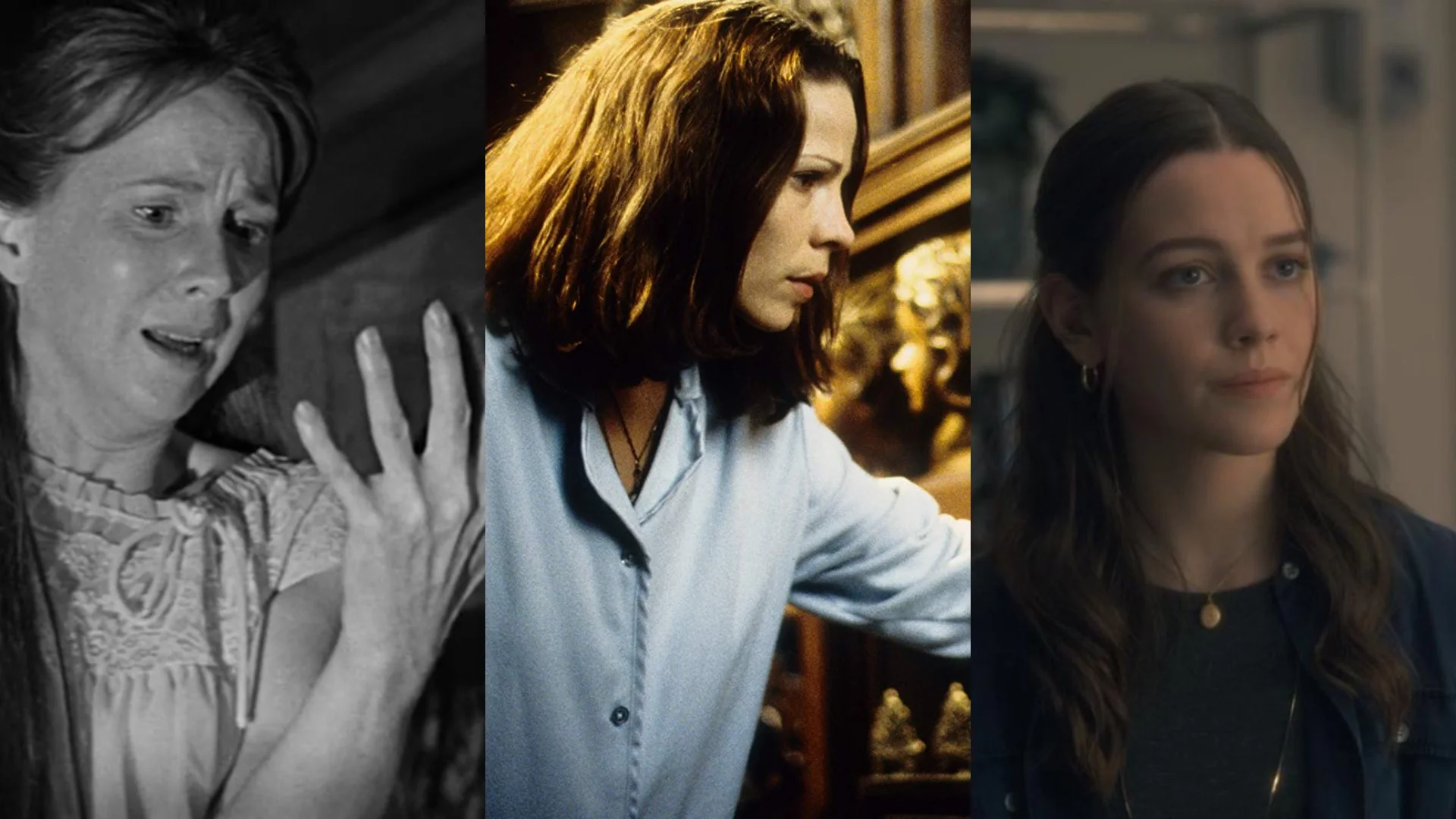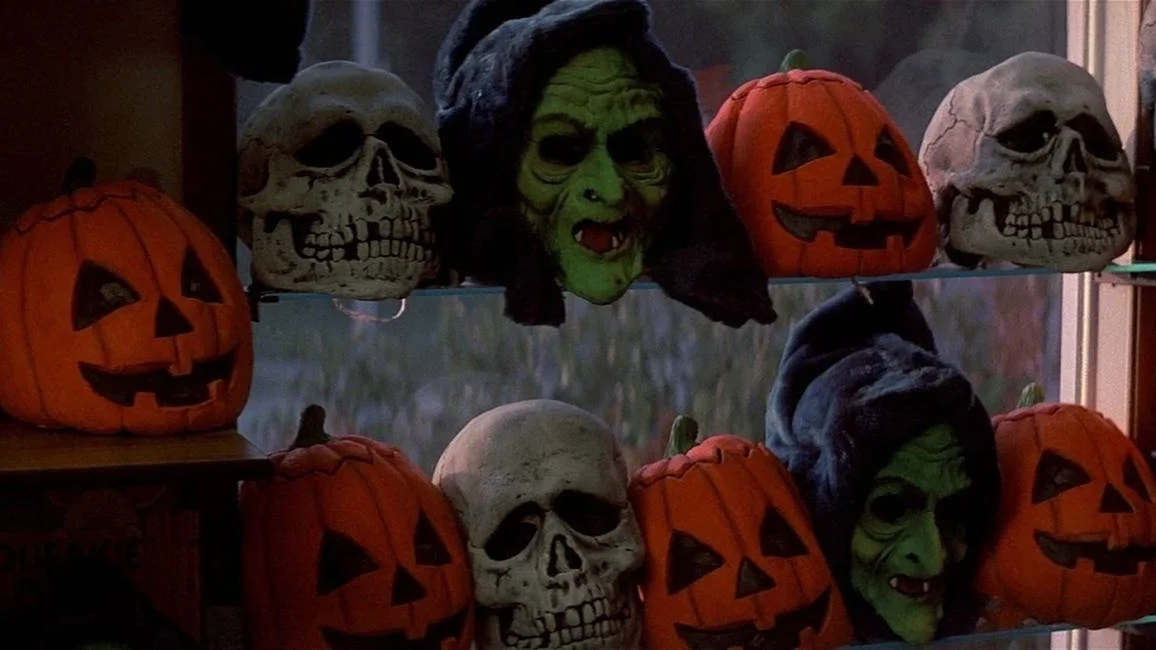HorroRemakes: The Hauntings of Hill House
It’s kind of insane to me that they adapted “The Haunting of Hill House” again. It’s been adapted twice to mixed success, and there doesn’t seem to be a good reason to take another shot at it. But it’s 2018, so of course what is old will become new again. Thankfully this adaptation was safe in the hands of Mike Flanagan, who knew better than to directly adapt a story as beloved as Shirley Jackson’s literary masterpiece. Especially when 50 years before him, it had already been adapted to perfection.
1963’s The Haunting is one of the best adaptations I’ve ever seen. It completely understands its source material and translates its essence onto the screen. The story is pretty simple: a group of people live in a supposedly haunted house as an experiment to see its effects. There’s the scientist Dr. Markway (named Montague in the book), Eleanor Vance who experienced a poltergeist in her childhood, Theodora who can read minds, and Luke Sanderson who is set to inherit the house after his aunt dies.
Eleanor has spent most of her life up to this point taking care of her sick mother up until her recent death. She’s clearly glad to be out of that situation and on her own. To her, the house represents a sense of freedom and she sees this group as a new family. Before long, the house sets its target on her and her newfound family alienates her, thinking she’s going insane. And insane she might be, but it’s the house to blame. It bangs on her door, keeping her from sleeping. It writes her name on the wall, asking her to “come home”. Not only that, but it just looks eerie. Set designer Elliot Scott covers the walls head to toe with statues, paintings, ornaments and other decorations. The ceilings are low, the lighting is bright, and there are no corners to be seen, giving the house a disarming view. It’s not that the house is scary, it’s just unsettling. It seems like it’d be hard to relax in. After Theodora moves into Eleanor’s room because hers is too haunted, the idea of personal space is completely out the window.
Eleanor wants nothing more than a little space. She’s looking for some freedom after being at her mother’s beck and call for most of her life. This situation doesn’t provide that, with most of the other experiment-members alienating her, but she does feel a connection with the house itself. Whether this has to do with the freedom it represents to her or it’s the house taking over her mind is open to interpretation, but it’s clear that the house has at least some control over her. But it’s also clear the she doesn’t want to leave, even in the few moments when she’s in her right mind.
That question - is it the house taking hold of Eleanor or Eleanor slowly losing it after her mother’s death - is central to the 1963 version of The Haunting and is taken straight from the book. When Jan de Bont made his remake in 1999, he threw that question out the window, and the film was made much shallower, and less interesting, because of it.
The premise is the same: Eleanor, Theodora, Luke and a doctor all venture to a house for an experiment that turns spooky. The doctor (now named Marrow) lures them there under the guise of an insomnia study, while really being interested their responses to fear. He knows that the house is haunted and wants to see how they’ll react to that fact. The question of whether the horror is real or just imagined is never a mystery. Instead, the question becomes what is haunting it.
That question is quickly answered as well, and in the most unsatisfying way. This remake takes what is amazing about the original book and movie - watching from Eleanor’s point of view as she’s slowly driven to her mental limits - and rips that away. Instead of building genuine terror out of tense situations and the threat of the unknown, ghosts are shown using rough-looking CGI resulting in a rather uninteresting final sequence that is anything but scary.
As many liberties as the 1999 adaptation takes, the Netflix version, a new ten part miniseries carrying the book’s full name, takes even more. That doesn’t mean it’s not a good adaptation, though. Series creator Mike Flanagan changed most things about the story, the plot, the characters, the setting, but managed to still capture the heart of the story: the way that trauma, grief and mental illness can consume your life, especially when that trauma involves a house that wants you dead.
With this adaptation, there’s no experiment being performed, no group of people moving into the house, even the characters are different. The majority of the story takes place outside of the house in fact. Luke, Eleanor, Theodora, Steven and Shirley Crane are five siblings separately trying to keep it together. As children, their parents had bought Hill House and moved the family in for a summer as they prepared the house to be resold. But during that summer, the house had taken its hold on their mother, eventually driving her to suicide.
While the series doesn’t contain most of the plot details of the original movie or book, it has several references throughout. There are scares borrowed from the original, lines of dialogue that are only slightly changed from other versions, and even the characters are named after those in the original (as well as the book’s author Shirley Jackson). More importantly than these allusions, the core theme remains the same and is only expanded on in the extended format. Flanagan’s series has a firm foundation in the ways that trauma and guilt can consume someone’s consciousness and become the driving force in their lives. Much like how in the 1963 version Eleanor is driven by her desire to escape from the life her mother’s illness had trapped her in, the Netflix series focuses on characters trying to find coping mechanisms to deal with their own mother’s death.
At the end of the day, it didn’t bother me that the plot of the Netflix adaptation was completely changed. I found plenty of joy in the pieces I recognized, and it somehow felt familiar throughout. The term adaptation might not be apt, but it definitely felt more related to the original book than the 1999 edition. Both vary from the form of the original but, at the end of the day, it matters more to keep true to the heart of the story than to mimic it.















